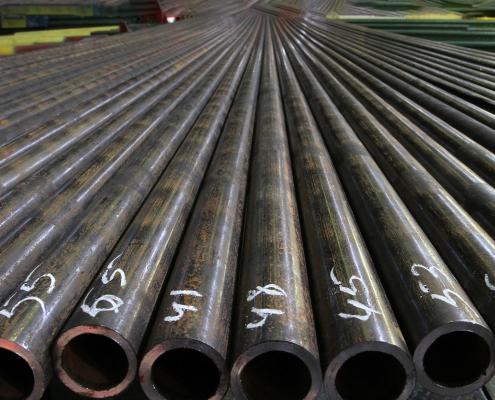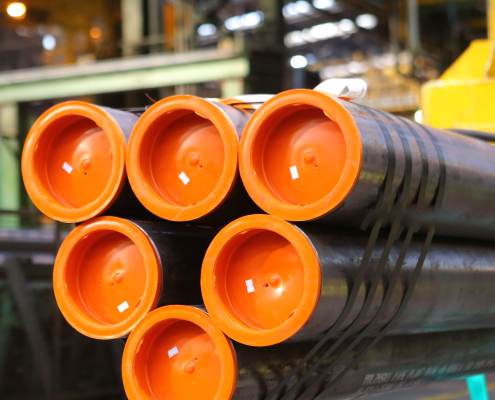Future Energy Steel offers high-quality Seamless Steel Mechanical Tubing for engineering purposes, conforming to ASTM and EN standards. These high-quality tubes, including EN 19294-1 hollow bar for machining, EN 10297-1 seamless carbon and alloy steel mechanical tubing, and ASTM A519 seamless carbon and alloy steel mechanical tubing, are essential for applications such as hydraulic systems, automotive engineering, and industrial machinery. Utilizing materials like E355, E470, C45E, 41Cr4, 30CrMo4, 34CrMo4, 42CrMo4, 36CrNiMo4, 30CrNiMo8, 1020, 1045, 1524, 1527, 4130, 4135, 4140, and 4145, we ensure superior strength, toughness, and durability. Contact us at [email protected] for customized solutions to meet your specific project needs.
FAQs
What is Mechanical Tubing?
Mechanical tubing is a category of steel tubing that is used for a variety of structural and mechanical applications. Unlike other types of tubing that may be used for fluid conveyance (such as piping), mechanical tubing is specifically designed for applications that require strength, durability, and precision.
What Are the Characteristics of Mechanical Tubing?
Material Composition: Typically made from carbon steel, alloy steel, or stainless steel. May include other materials such as aluminum or brass for specific applications.
Shapes and Forms:
Round Tubes: The most common shape, used for strength and versatility.
Square and Rectangular Tubes: Used in applications requiring flat surfaces for easier assembly.
Oval and Custom Shapes: Designed for specific aesthetic or functional requirements.
Manufacturing Processes:
Seamless Tubing: Made by extruding a solid steel billet to form a hollow tube. It offers high strength and uniformity.
Welded Tubing: Formed by rolling steel sheets and welding the seam. It is generally more cost-effective than seamless tubing and suitable for many applications.
Dimensional Precision: Produced with tight tolerances for diameter, wall thickness, and length to meet specific engineering requirements.
Finishes: Can be finished with coatings such as galvanizing, painting, or powder coating to enhance corrosion resistance and appearance.
What Are the Applications of Mechanical Tubing?
Mechanical tubing is used across a wide range of industries due to its versatility and strength. Here are some common applications:
Automotive Industry:
Structural Components: Used in vehicle frames, suspension systems, and roll cages.
Drive Shafts: Provides high strength and precision for power transmission.
Construction:
Structural Supports: Used in buildings, bridges, and other structures for load-bearing applications.
Scaffolding: Provides temporary support and safety for construction workers.
Industrial Equipment:
Machinery Parts: Used in the production of gears, axles, and hydraulic cylinders.
Conveyor Systems: Provides structure and movement in industrial and manufacturing settings.
Furniture and Fixtures:
Frames and Supports: Used in the construction of chairs, tables, and other furniture items.
Architectural Features: Includes railings, handrails, and decorative elements.
Recreational Equipment:
Bicycle Frames: Offers lightweight and strong tubing for bicycle construction.
Sports Equipment: Used in the production of items like golf club shafts and ski poles.
Aerospace Industry:
Aircraft Structures: Used in fuselage frames, landing gear, and other critical components requiring high strength-to-weight ratios.
What Are the Key Benefits of Mechanical Tubing?
Strength and Durability: Offers high mechanical strength, making it suitable for load-bearing applications.
Precision and Consistency: Manufactured with tight tolerances to ensure dimensional accuracy.
Versatility: Available in various shapes and materials to suit different applications and design requirements.
Cost-Effective: Welded tubing, in particular, provides a balance between cost and performance for many applications.
How to Produce Mechanical Tubing?
The production of mechanical tubing involves several processes that ensure the tubes meet specific requirements for mechanical properties, dimensional accuracy, and surface finish. The methods used can vary depending on whether the tubing is seamless or welded. Here is a detailed overview of the production processes for both types:
Production of Seamless Mechanical Tubing
1. Raw Material Preparation
Billet Selection: The process begins with selecting high-quality steel billets. These billets are typically made from carbon steel, alloy steel, or stainless steel, depending on the final application requirements.
Heating: The billets are heated in a furnace to a high temperature, making them malleable for further processing.
2. Piercing and Rolling
Piercing: The heated billet is pierced using a rotary piercing mill to create a hollow tube. This process involves forcing a billet over a mandrel or piercing plug, which creates the initial hollow shape.
Rolling: The pierced billet, now a hollow shell, is elongated and reduced in diameter through a series of rolling mills. This process helps achieve the desired diameter and wall thickness.
3. Sizing and Stretch Reducing
Sizing: The tube is passed through a sizing mill, which helps achieve precise dimensions and improve surface finish.
Stretch Reducing: This process involves passing the tube through a series of rollers that gradually reduce its diameter and wall thickness while increasing its length.
4. Heat Treatment
Normalizing: The tubes are heated to a specific temperature and then cooled in air to refine the grain structure and improve mechanical properties.
Quenching and Tempering: For certain applications, tubes may be quenched (rapidly cooled) and tempered (reheated to a lower temperature) to achieve specific mechanical properties like increased strength and toughness.
5. Finishing and Inspection
Straightening: Tubes are straightened using a straightening machine to ensure they meet straightness tolerances.
Cutting: Tubes are cut to the desired lengths using saws or other cutting tools.
Inspection: The finished tubes undergo various inspections, including dimensional checks and nondestructive testing (such as ultrasonic testing), to ensure quality and conformity to standards.
Production of Welded Mechanical Tubing
1. Raw Material Preparation
Coil or Strip Selection: The process starts with selecting steel coils or strips that are slit to the desired width.
Cleaning: The steel strips are cleaned to remove any impurities or contaminants.
2. Forming
Roll Forming: The steel strip is gradually shaped into a tubular form using a series of forming rolls. This creates a continuous tube shape from the flat strip.
3. Welding
Electric Resistance Welding (ERW): The edges of the formed tube are heated and pressed together to form a longitudinal seam. This process uses electric resistance to generate heat, resulting in a welded joint.
Laser or High-Frequency Welding: In some cases, laser or high-frequency welding techniques are used to achieve a more precise and high-quality weld.
4. Sizing and Calibration
Sizing: The welded tube is passed through sizing rolls to ensure uniform diameter and wall thickness.
Calibration: Further rolling processes refine the tube dimensions and improve the surface finish.
5. Heat Treatment (Optional)
Depending on the application, welded tubes may undergo heat treatment processes such as annealing to relieve stresses and improve ductility.
6. Finishing and Inspection
Straightening: Similar to seamless tubes, welded tubes are straightened to meet straightness specifications.
Cutting: Tubes are cut to the required lengths.
Inspection: Welded tubes are inspected for weld integrity and dimensional accuracy using techniques such as eddy current testing or ultrasonic testing.





